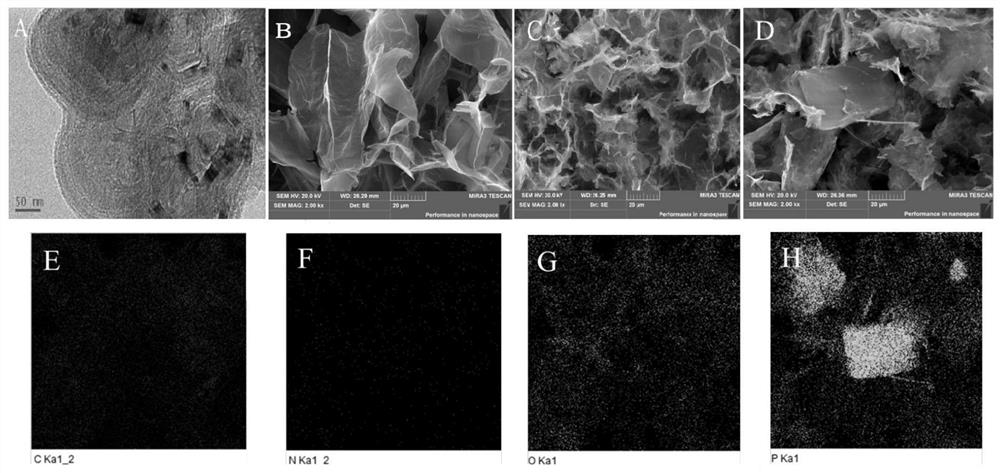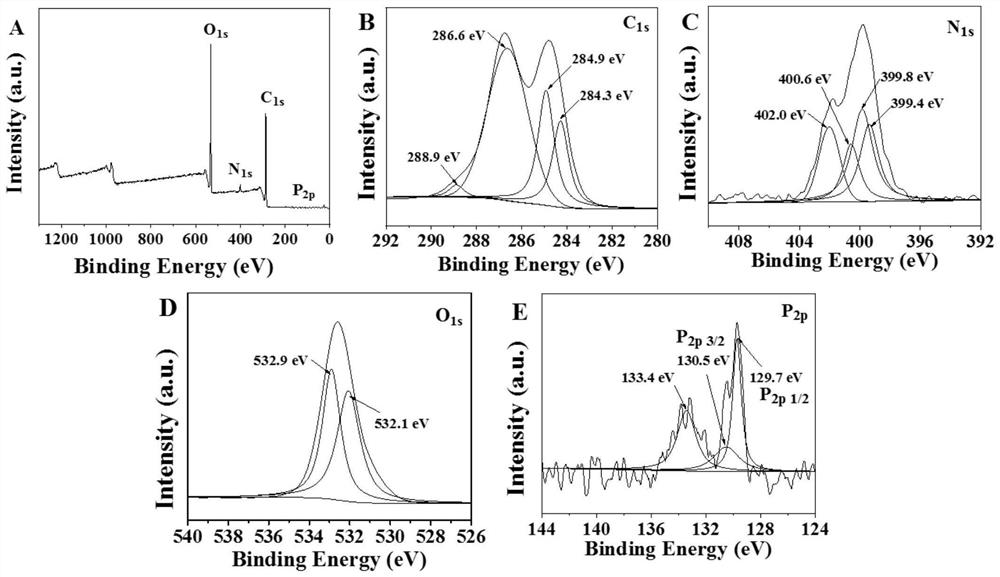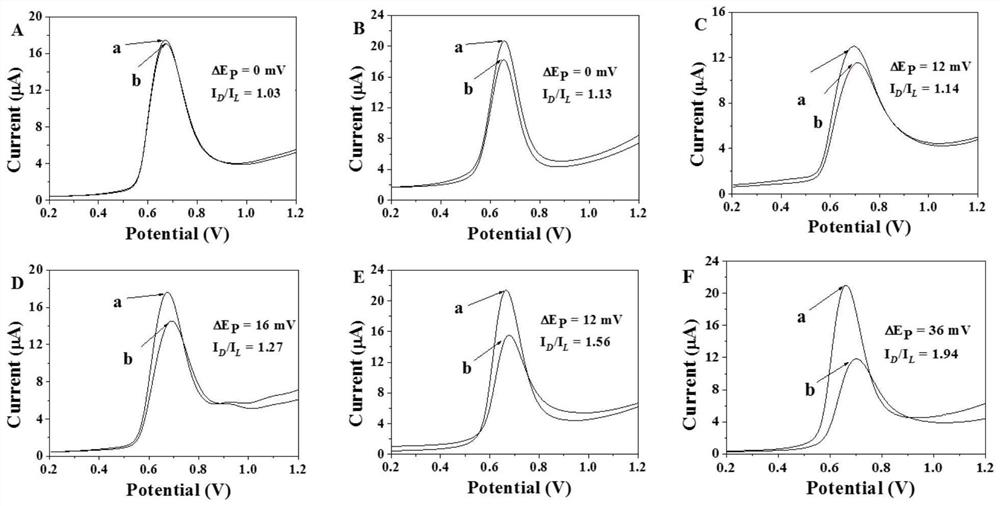Graphene oxide-amino-beta-cyclodextrin/black phosphorus modified glassy carbon electrode as well as preparation method and application thereof
A glassy carbon electrode and graphene technology, applied in the field of electrochemistry, can solve the problems of low stability and weak recognition ability, and achieve the effects of reducing interface resistance, high selectivity, high electrochemical signal and chiral recognition specificity
- Summary
- Abstract
- Description
- Claims
- Application Information
AI Technical Summary
Problems solved by technology
Method used
Image
Examples
Embodiment 1
[0041] The preparation steps of the single-layer graphene oxide-amino-β-cyclodextrin / black phosphorus nanosheet modified glassy carbon electrode in this example are as follows:
[0042] S1: Pipette 0.1mL monolayer graphene oxide aqueous phase dispersion (10.0mg g -1 ), dispersed in 10.0mL ultrapure water, and then ultrasonicated for 1min to disperse evenly; respectively added 10.0mg of 1-ethyl-3-(3-dimethylaminopropyl) carbodiimide hydrochloride and 10.0 mg of N-hydroxysuccinimide, placed on a magnetic stirrer and stirred for 2 hours to obtain a mixed dispersion; then weigh 10.0 mg of amino-β-cyclodextrin and dissolve it in 10.0 mL of 0.1M acetic acid solution to obtain amino- β-cyclodextrin solution, add the obtained amino-β-cyclodextrin solution dropwise to the above mixed dispersion, and continue to stir for 4 hours; After washing 3 times, the filter cake was finally dispersed in 10.0 mL ultrapure water to obtain a single-layer graphene oxide-amino-β-cyclodextrin composite...
Embodiment 2
[0047] The preparation steps of the single-layer graphene oxide-amino-β-cyclodextrin / black phosphorus nanosheet modified glassy carbon electrode in this example are as follows:
[0048] S1: Pipette 0.4mL monolayer graphene oxide aqueous phase dispersion (10.0mg g -1 ), dispersed in 20.0mL ultrapure water, and then ultrasonically 3min to disperse evenly; respectively added 80.0mg of 1-ethyl-3-(3-dimethylaminopropyl) carbodiimide hydrochloride and 80.0 mg of N-hydroxysuccinimide was stirred and activated on a magnetic stirrer for 4 hours to obtain a mixed dispersion; then 30.0 mg of amino-β-cyclodextrin was weighed and dissolved in 60.0 mL of 0.5M acetic acid solution to obtain amino -β-cyclodextrin solution, add the obtained amino-β-cyclodextrin solution dropwise to the above mixed dispersion, and continue to stir and react for 8 hours; After washing with water for 4 times, the filter cake was finally dispersed in 5.0 mL of ultrapure water to obtain a single-layer graphene oxi...
Embodiment 3
[0053] The preparation steps of the single-layer graphene oxide-amino-β-cyclodextrin / black phosphorus nanosheet modified glassy carbon electrode in this example are as follows:
[0054] S1: Pipette 0.5mL monolayer graphene oxide aqueous phase dispersion (10.0mg g -1 ), dispersed in 100.0mL ultrapure water, and then ultrasonicated for 5min to disperse evenly; respectively added 100.0mg of 1-ethyl-3-(3-dimethylaminopropyl) carbodiimide hydrochloride and 100.0 mg of N-hydroxysuccinimide, placed on a magnetic stirrer and stirred for 3 hours to obtain a mixed dispersion; then weigh 100.0 mg of amino-β-cyclodextrin and dissolve it in 50.0 mL of 1.0M acetic acid solution to obtain amino -β-cyclodextrin solution, add the obtained amino-β-cyclodextrin solution dropwise to the above mixed dispersion, and continue to stir and react for 10 hours; After washing with water for 5 times, the filter cake was finally dispersed in 10.0 mL of ultrapure water to obtain a single-layer graphene oxi...
PUM
 Login to View More
Login to View More Abstract
Description
Claims
Application Information
 Login to View More
Login to View More - R&D
- Intellectual Property
- Life Sciences
- Materials
- Tech Scout
- Unparalleled Data Quality
- Higher Quality Content
- 60% Fewer Hallucinations
Browse by: Latest US Patents, China's latest patents, Technical Efficacy Thesaurus, Application Domain, Technology Topic, Popular Technical Reports.
© 2025 PatSnap. All rights reserved.Legal|Privacy policy|Modern Slavery Act Transparency Statement|Sitemap|About US| Contact US: help@patsnap.com



